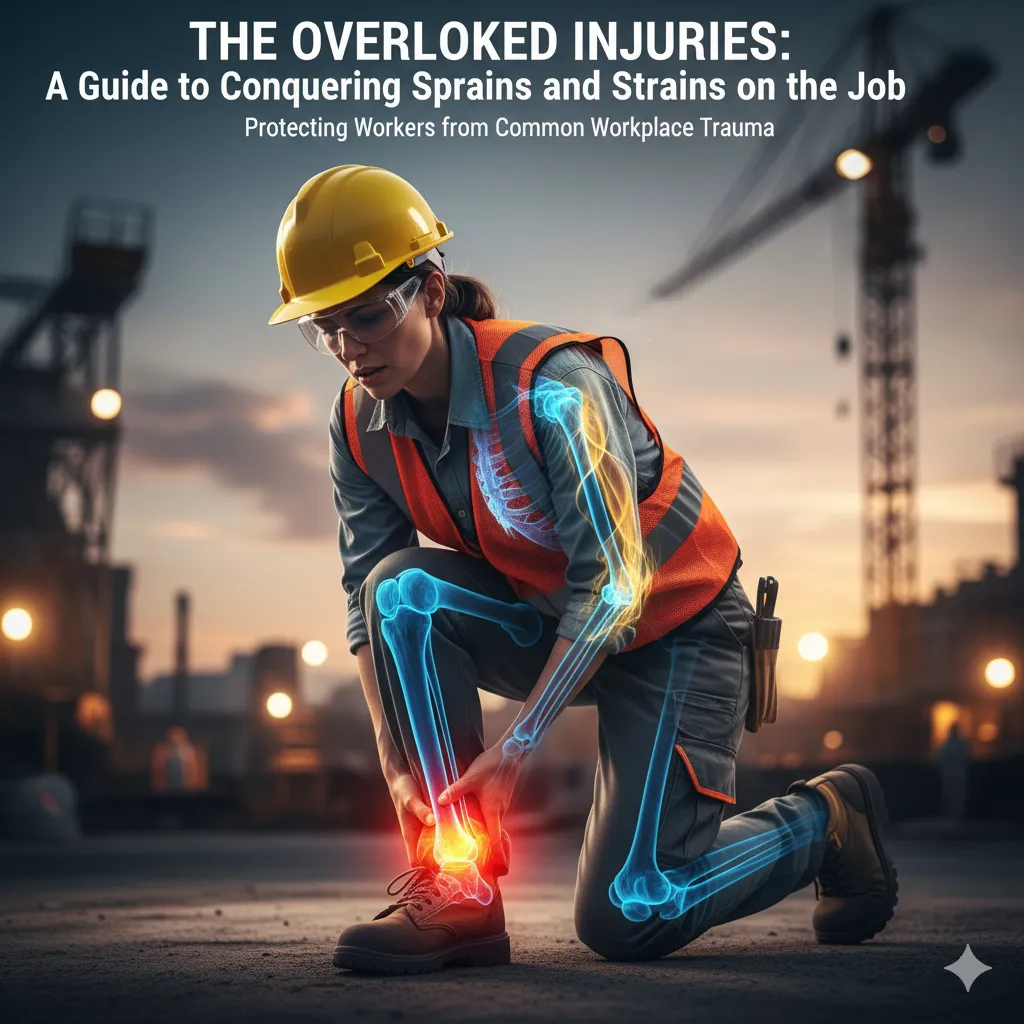Dr. Luke Sparaccio D.C. Blog

The Overlooked Injuries: A Guide to Conquering Sprains and Strains on the Job
The Overlooked Injuries: A Guide to Conquering Sprains and Strains on the Job
In the construction industry, every day is a test of physical strength. But among the falls, impacts, and heavy equipment accidents, there's another class of injuries that is far more common, yet often overlooked. Sprains and strains account for approximately one-third of all injuries in construction, making them the most prevalent workplace incident.
You might think of a sprain or strain as a minor annoyance, something to "tough out" for a few days. But these soft tissue injuries can be painful, disabling, and require lengthy recovery periods if not treated properly. This article is a guide to understanding these common injuries, their causes on the job site, and a clear path to recovery that ensures you get back to work faster and stronger.
What's the Difference? A Guide to Sprains and Strains
While the terms are often used interchangeably, a sprain and a strain are two different types of injuries that affect different parts of your body. Knowing the difference is the first step toward proper care.
A Sprain is an injury to a ligament, the tough, fibrous tissue that connects bones to other bones and provides stability to your joints. Sprains typically occur when a joint is forced beyond its normal range of motion, such as during a sudden twist or a fall. Ankle, knee, and wrist sprains are the most common.
A Strain is an injury to a muscle or tendon, the tissue that connects muscle to bone. Strains can be the result of a sudden, forceful event—like pulling a muscle while lifting something too heavy—or, more commonly, a gradual injury from repetitive overuse. The back is the most common site for strains among construction workers.
Both injuries share common symptoms like pain, swelling, and limited mobility. However, the recovery period for these injuries is often lengthy and can be debilitating if not managed correctly from the start.
The High-Risk Environment: Analyzing the Causes of Injury
Construction work is inherently demanding, and specific job activities and conditions are directly correlated with sprains and strains. These risks rarely occur in isolation; they have a synergistic, cumulative effect that amplifies the potential for harm.
Force and Repetitive Motion: Your job requires a tremendous amount of muscle effort, from pushing and pulling to gripping tools. Doing the same movements over and over, such as nailing a deck or screwing drywall, places constant stress on the same muscles, tendons, and joints. Over time, this can cause the body's natural lubrication systems to fail, leading to friction, inflammation, and pain.
Awkward Postures: Working in postures that deviate from your body's neutral position dramatically increases the stress on your joints, muscles, and nerves. This includes bending, twisting, or reaching to get the job done. Maintaining a fixed posture for prolonged periods, such as when working overhead or in a crouched position, is a common cause of neck, back, and leg pain.
Whole-Body Strain: Improper lifting techniques—such as bending from the waist or twisting—can increase the forces on your spine, making your back more susceptible to strains and tears. Similarly, pushing is a more biomechanically sound choice than pulling because it allows you to use your own body weight to assist the movement, which requires less force and less strain on your back.
The Chiropractic Approach: Restoring Strength and Function
When an injury occurs, a swift and informed response is critical for proper healing and to prevent long-term complications. Chiropractic care offers a valuable non-invasive pathway to recovery for both sprains and strains. The core of this approach is its ability to address not only the immediate injury but also any underlying misalignments or imbalances that were caused by it or contributed to it.
A multi-faceted approach to care is essential for a full and complete recovery:
Soft Tissue Massage: Chiropractors, with a thorough understanding of anatomy, can perform soft tissue massage to identify and treat areas of strain. This gentle technique reduces swelling and improves blood circulation, which is crucial for delivering oxygen and nutrients to the injured tissues and accelerating the healing process.
Cold & Heat Therapy: The use of temperature is a cornerstone of acute injury management. Cold therapy reduces blood flow to the affected area, minimizing inflammation and swelling. Once the initial inflammatory phase has passed, heat therapy is used to increase blood circulation, which further accelerates the delivery of healing nutrients and stimulates cell regeneration.
Targeted Stretches & Exercises: Chiropractors develop a personalized recovery plan that includes carefully selected stretches to restore flexibility and targeted exercises to build strength, stability, and mobility. This approach ensures a full recovery by addressing not just the immediate injury but also the long-term functional restoration of the affected area.
Spinal and Joint Adjustments: An injury in one area, such as a sprained ankle, can cause compensatory misalignments elsewhere in the body. Through precise, controlled movements, chiropractors can realign the musculoskeletal system, which can immediately reduce pain by alleviating pressure on nerves and improving joint function.
Dr. Sparaccio's Professional-Grade Care
Dr. Luke J. Sparaccio’s approach is fundamentally different from a one-size-fits-all treatment. He combines the best non-invasive techniques with a patient-centered approach that gets to the root cause of the problem. His specialized postgraduate training in the Gonstead system and Orthospinology, a specific upper cervical technique, gives him a unique ability to address complex conditions that may be contributing to your pain. This methodical precision ensures that corrections are targeted and specific, not just generalized.
His mission is to "educating and empowering people to live and function at their highest potential" by removing the interference that prevents the body from healing itself. This is a holistic philosophy of care that extends beyond the physical body alone. When you visit Dr. Sparaccio, you receive a professional, personalized plan to restore long-term function and resilience.
Your Blueprint for Action: Practical Steps to Stay Healthy
The best way to manage an injury is to prevent it in the first place. By adopting a proactive mindset, you can significantly reduce your risk of injury and ensure your body is ready for the long haul.
Work Activity Proactive Measures Lifting & Carrying
Keep loads close to the body, bend with your knees not your back, and use a buddy or mechanical device for objects over 50 pounds.
Repetitive Motions
Take frequent breaks, vary tasks when possible, and use tools with anti-vibration features or gloves that fit properly.
Awkward Postures
Use platforms or ladders for overhead work, and take regular breaks to stretch and change positions.
Sprains & Strains
Stay physically fit and always warm up your muscles before a strenuous job, just like an athlete would.
You don’t have to live with aches and pains as a part of your job. When you're ready to address the root cause of your discomfort, schedule a consultation with Dr. Luke J. Sparaccio today.
Caring for Your Body, Mind, and Spirit
Get our experts to answer your questions within 24 Hrs.
613 Old Trolley Rd suite f-1
Summerville, SC 29485
Monday - Saturday: 7:00am-6:30pm
Sunday: Closed
(804)708-6683
Discover
Services
Serving
Follow Us
© 2025 Luke Sparaccio D.C. All rights reserved. •

